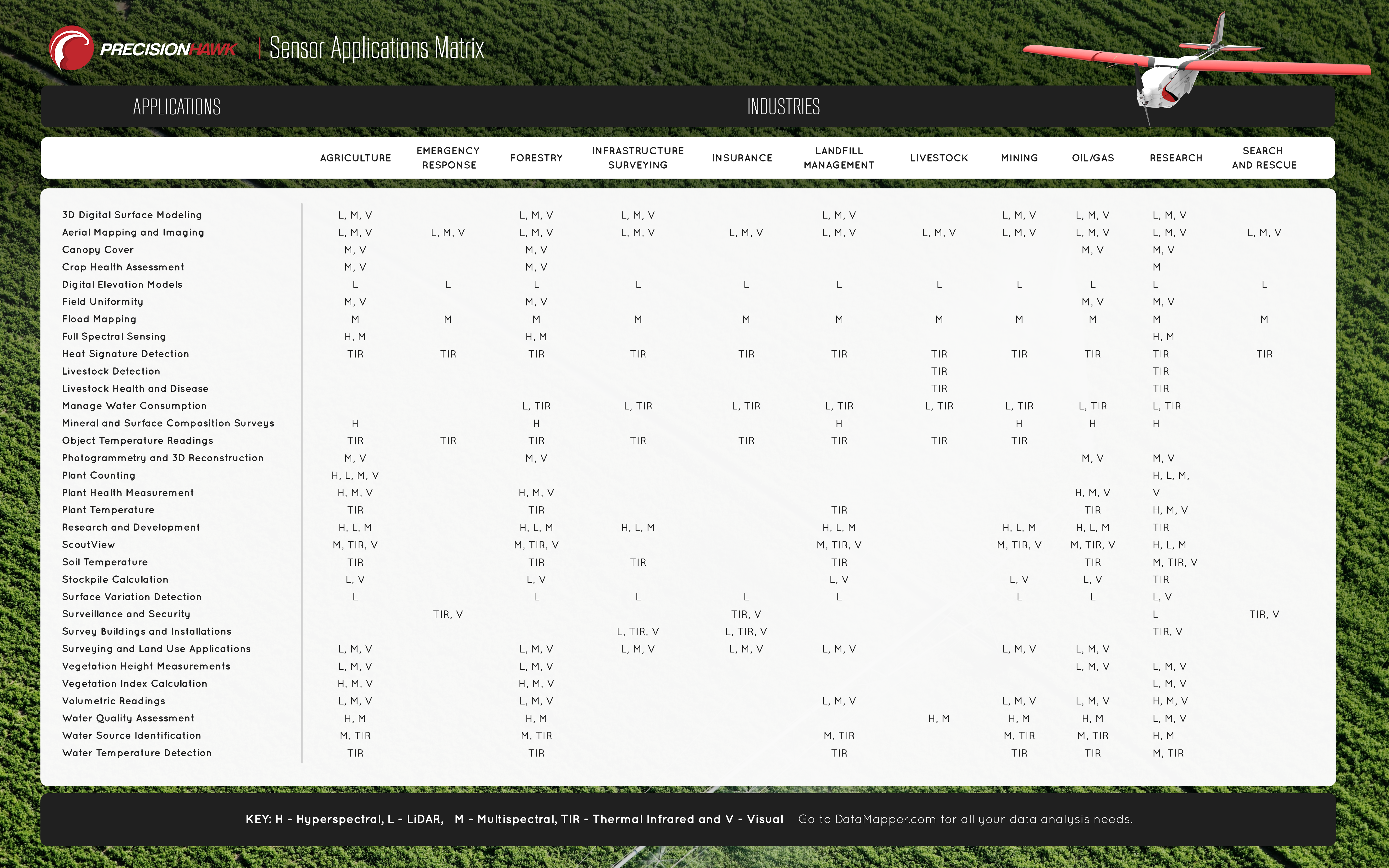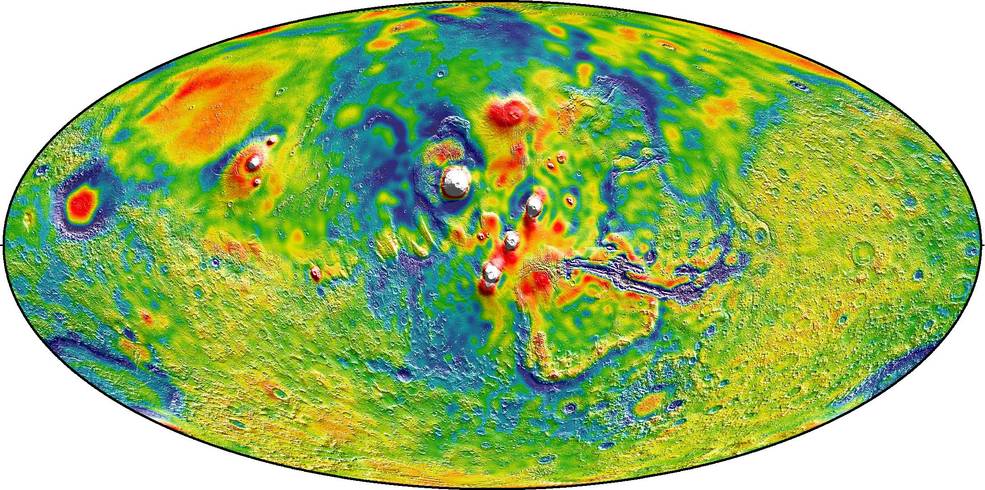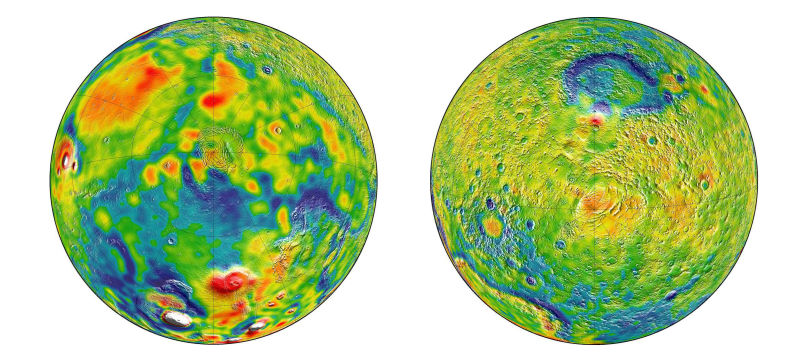
Breakdown of drone remote sensing sensors
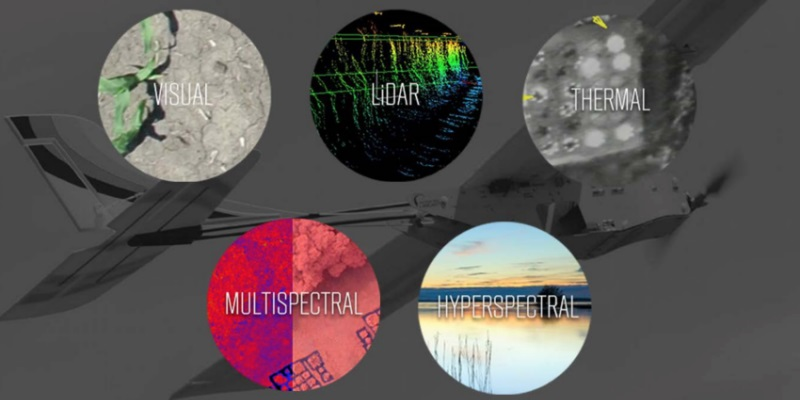
As high-fidelity remote sensing sensors continue to become smaller and more compact, drones are now capable of carrying more payload options than ever before. With all these various models, picking the right one for each unique industrial use can feel overwhelming.
The best way to begin is to identify your specific needs by first determining the result that you want. What are you hoping to achieve? Once you have established your goals, selecting the best-suited sensor will come easily.
At PrecisionHawk, we are cognizant of the fact that better aerial information is highly dependent on the quality of data coming into the pipeline. For this reason, we offer a wide range of sensors and comprehensive data analysis tools that are unparalleled in today’s UAV market. Below is a brief overview of each sensor available, its industry applications and use cases.
The Sensor Applications Matrix is an easy-to-use guide that simplifies sensor selection for your industry needs. It represents a sampling of top drone applications, though the possibilities are virtually limitless. Click on the image to enhance.
Hyperspectral
The completely integrated visible and near infrared Hyperspectral Sensor is perfect for small UAV applications. Hyperspectral provides more detailed information content with a capability to see the unseen in comparison to a visual camera. The line scanning (push broom) type sensor is perfect for research applications to measure the spectrography of the ground.
LiDAR
LiDAR is a more traditional surveying tool used for creating point clouds and digital elevation models of the ground. The data can be used for plant height measurement by comparing the first return from the laser when it hits the top of the plant to the last return when it hits the ground.The ability to penetrate foliage makes LiDAR unique compared to passive optical imagers that provide height data only from the canopy. The digital elevation models can be more accurate compared to visual sensor based digital elevation models, depending on the application.
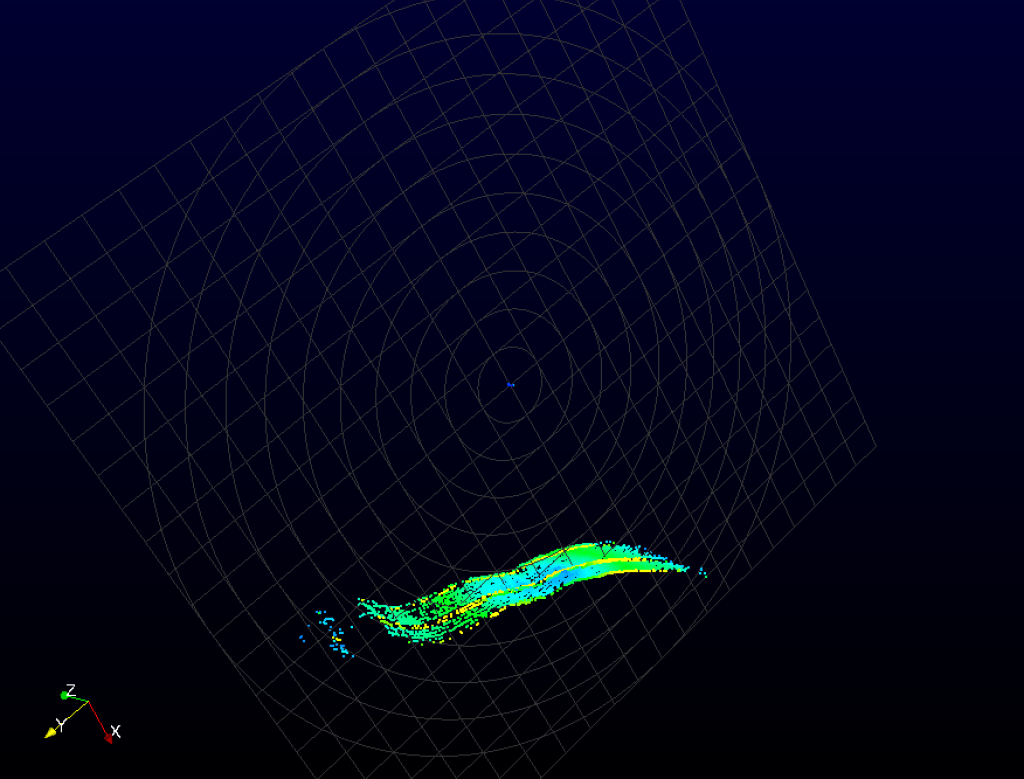
Multispectral
The Multispectral Sensor is one of the most commonly used scanning systems. Like the Hyperspectral Sensor it’s able to see visible light, infrared radiation and ultraviolet light. We offer a 5 Channel Multispectral Sensor and a High Resolution Multispectral Imager. They range in the number of bands and resolutions, topping out at sub one centimeter per pixel.
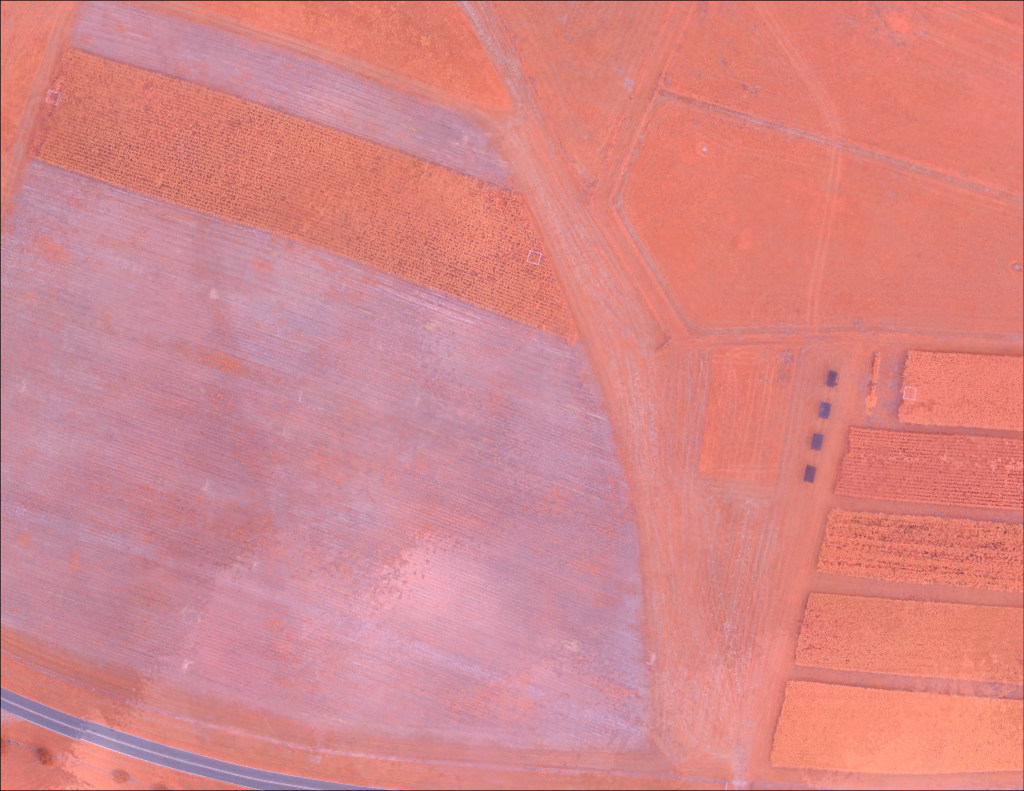
Thermal Infrared (TIR)
Thermal Infrared Sensors have the ability to measure and read the surface temperature of land or objects beyond the scope of human vision. We offer two Thermal Infrared Sensor options, a High Resolution TIR-H and Radiometric High Resolution Thermal Sensor. Although the two sensors are very similar, a key difference is the High Resolution TIR-H sensor output is linear with temperature.
Visual
Both the Visual Sensor and Enhanced Resolution Visual Sensor are high-resolution, low-distortion RGB cameras which produces color imagery. A major advantage of visual imagery captured by a UAV is the aerial perspective of a specific area. You’re able to get a birds-eye-view high-res picture without putting in extra effort for the vantage point.
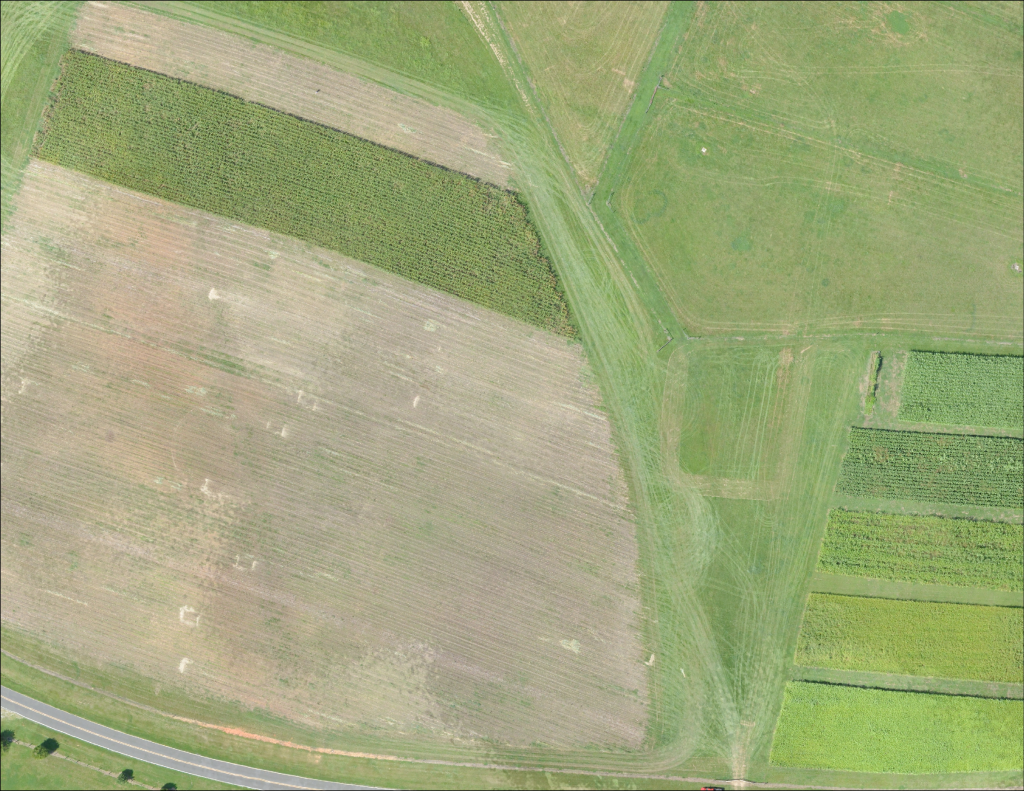
In a results driven climate, having a multitude of solutions available in one location eases the pressure when selecting the perfect sensor. We are constantly exploring advancements with the range of sensors we currently offer and creating innovative solutions to add more sensors to our existing line.
Did you like this post? Read more and subscribe to our monthly newsletter!


